 |
 |
 |
| |
Non-HIV care provider....Aging, Worse Still to Come?
....Aging Clinic at Weill-Cornell, NYC; aging $costs in HIV skyrocket
|
| |
| |
Download the PDF here
Eugenia Siegler, MD
Weill Cornell Medicine, New York, NY, USA
Reported by Jules Levin
7th International Workshop on HIV and Aging, September 26-27, 2016, Washington, DC
"More multimorbidity at higher age in HIV: worse still to come?" from Jules: YES worse is yet to come !!!
from Jules - see slide below on Comorbidities care Costs & ART costs: patient ages 40-60 the comorbidities care costs are about 20-35% of the ART costs - at age 60 these costs are $10,000 a year & greater than ART costs
.....from Jules: as I have been saying for a while now we need a National Discussion on Aging to begin to address the variety of needs regarding older patients. Giovanni Guaraldi projected in study that in 14 years 70% of older patients in Italy will be frail & that 40% will need to be confined to old age homes...[..Future challenges for clinical care of an ageing population infected with HIV: a "geriatric-HIV" modelling study - [Healthcare Costs].... Very Sobering Analysis go Aging in HIV+....60% frail - (09/15/16) ]
Older aged HIV+ patients are suffering with increased falls, fractures, frailty and cognitive impairment, no doubt tis will cause & is causing tremendous suffering, this IS the most important problem for patients with HIV, very soon 50% with HIV in the US will be over 60, now in NY & SF 50% are over 60 ! I have tried to move this along with the NIH, with the White House without any success.
Giovanni Guaraldi et : The total cost of medical care is higher in HIV-infected patients than in the general population in any age strata. This issue is quite obvious, given that ART medication cost accounts for the majority of the total care cost.3,21,44 This cost did not appear to vary across age groups. Besides that, we were also able to demonstrate that NICM care costs contributed significantly to this higher cost burden of HIV-infected patients in the context of a premature aging process producing an anticipation effect of more than 20 years in total direct cost. We believe it is necessary to continue to monitor in prospective studies the impact of the HIV-specific accelerated aging process on total care cost. Pp [Polypathology (Pp) was defined as the simultaneous presence of two or more NICMs.] accounts for a cost expenditure three times higher than that of HIV infection per se (US$8,911 vs US$2,878)...... What we have observed in this study is that the total cost of medical care is higher in HIV-infected patients in comparison with HIV-negative controls.
selected highlight slides.....full presentation follows


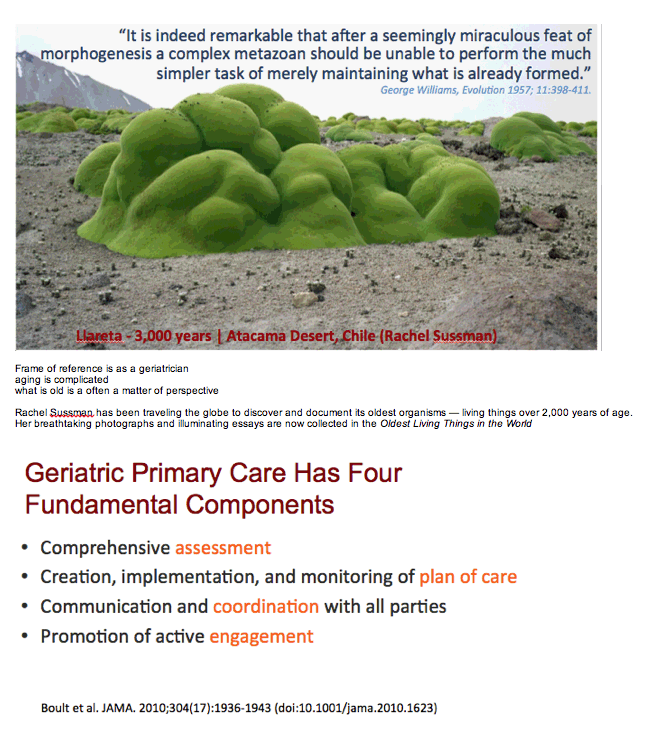
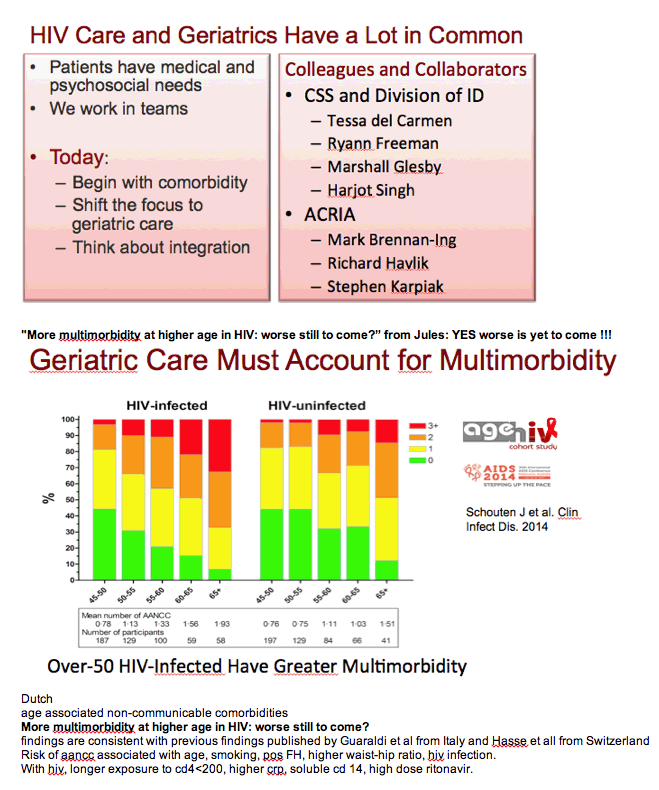
Comorbidities Care Costs:
Figure 2 Total cost of medical care in cases and controls stratified by age decades......A case-control study analyzing direct medical care costs in 2009.
Abbreviations: ART, antiretroviral therapy; NICM, noninfectious comorbidity.
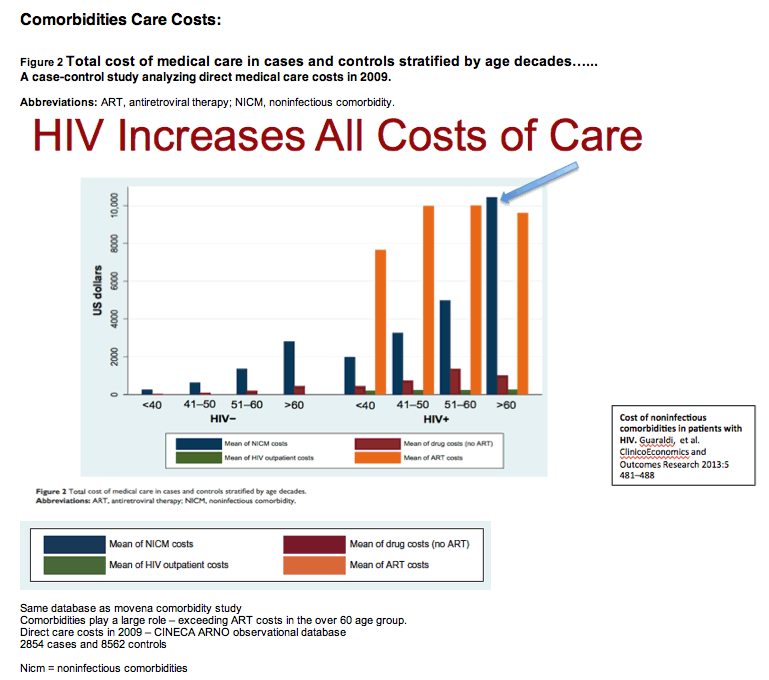
Same database as movena comorbidity study
Comorbidities play a large role - exceeding ART costs in the over 60 age group.
Direct care costs in 2009 - CINECA ARNO observational database
2854 cases and 8562 controls
Nicm = noninfectious comorbidities
-------------------------------
Cost of noninfectious comorbidities in patients with HIV
Giovanni Guaraldi, Stefano Zona1, Marianna Menozzi1, Federica Carli1, Pietro Bagni1, Alessandra Berti2, Elisa Rossi2, Gabriella Orlando1, Giuliana Zoboli3, Frank Palella4
https://www.ncbi.nlm.nih.gov/pmc/articles/PMC3789842/
Abstract
Objectives: We hypothesized that the increased prevalence of noninfectious comorbidities (NICMs) observed among HIV-infected patients may result in increased direct costs of medical care compared to the general population. Our objective was to provide estimates of and describe factors contributing to direct costs for medical care among HIV-infected patients, focusing on NICM care expenditure.
Methods: A case-control study analyzing direct medical care costs in 2009. Antiretroviral therapy (ART)-experienced HIV-infected patients (cases) were compared to age, sex, and race-matched adults from the general population, included in the CINECA ARNO database (controls). NICMs evaluated included cardiovascular disease, hypertension, diabetes mellitus, bone fractures, and renal failure. Medical care cost information evaluated included pharmacy, outpatient, and inpatient hospital expenditures. Linear regression models were constructed to evaluate predictors of total care cost for the controls and cases.
Results: There were 2854 cases and 8562 controls. Mean age was 46 years and 37% were women. We analyzed data from 29,275 drug prescription records. Positive predictors of health care cost in the overall population: HIV infection (β = 2878; confidence interval (CI) = 2001-3755); polypathology (β = 8911; CI = 8356-9466); age (β = 62; CI = 45-79); and ART exposure (β = 18,773; CI = 17,873-19,672). Predictors of health care cost among cases: Center for Disease Control group C (β = 1548; CI = 330-2766); polypathology (β = 11,081; CI = 9447-12,716); age < 50 years (β = 1903; CI = 542-3264); protease inhibitor exposure (per month of use; β = 69; CI = 53-85); CD4 count < 200 cells/mm3 (β = 5438; CI = 3082-7795); and ART drug change (per change; β = 911; CI = 716-1106).
Conclusion: Total cost of medical care is higher in cases than controls. Lower medical costs associated with higher CD4 strata are offset by increases in the care costs needed for advancing age, particularly for NICMs.
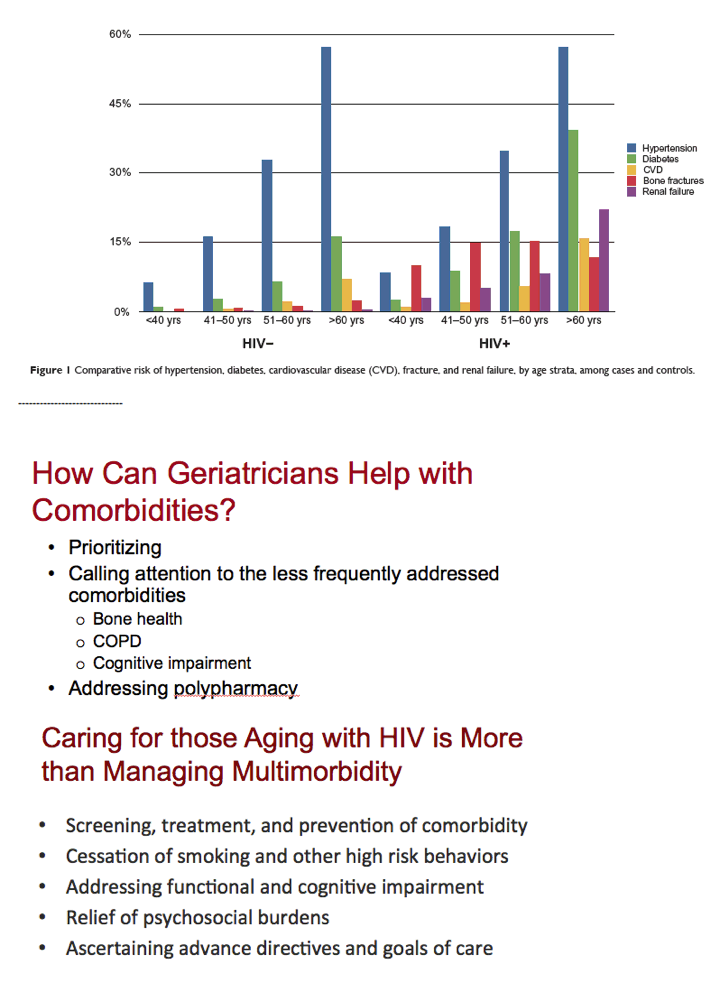
In his research, Professor Cacioppo has shown that loneliness affects several key bodily functions, at least in part through overstimulation of the body's stress response. Chronic loneliness, his work has shown, is associated with increased levels of cortisol, a major stress hormone, as well as higher vascular resistance, which can raise blood pressure and decrease blood flow to vital organs......Dr. Perissinotto is also interested in examining the link between loneliness and suicidal thoughts, as there has been little research in that area........http://www.nytimes.com/2016/09/06/health/lonliness-aging-health-effects.html?_r=0
Fig. 1 The relationships between the manifestations of impairment, limitations, frailty, and disability in an older man with osteoarthritis (left) and examples of the tools used to define each concept (right)
the impact of both HIV infection and frailty had a synergistic effect on mortality (mortality OR = 2.6 with HIV infection; OR = 3.3 with frailty; and OR = 7.1 with both HIVand frailty) [76].
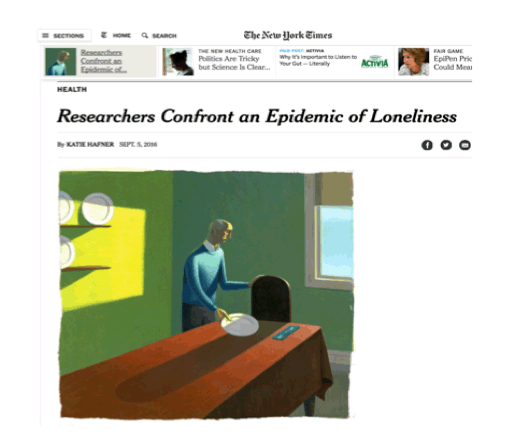
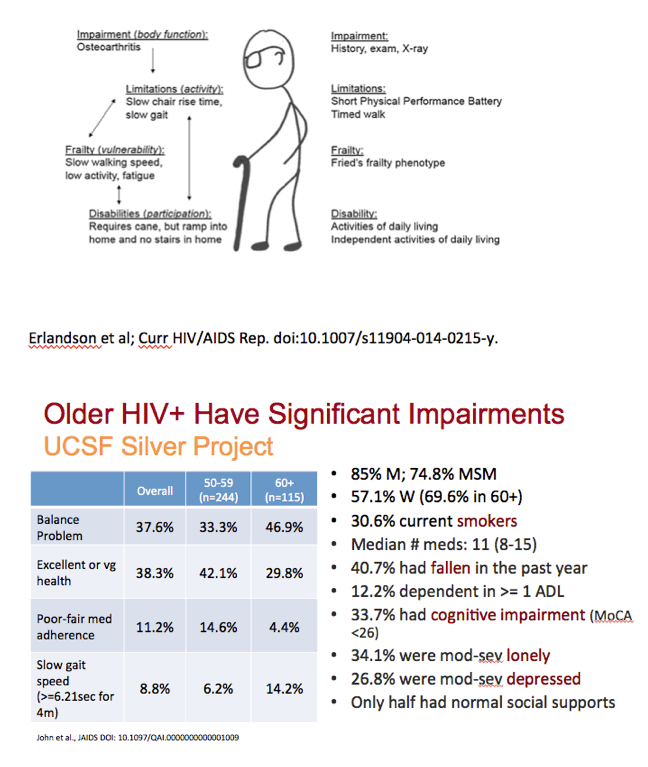
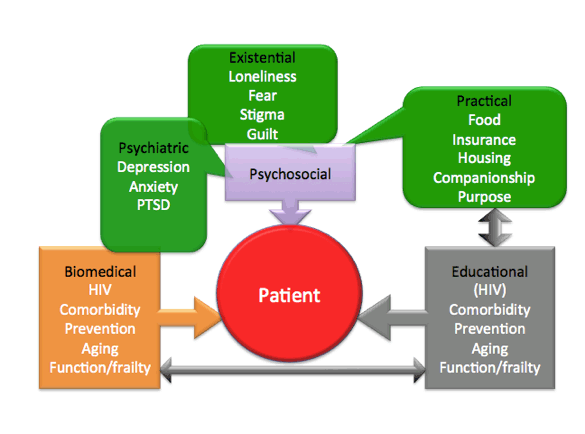
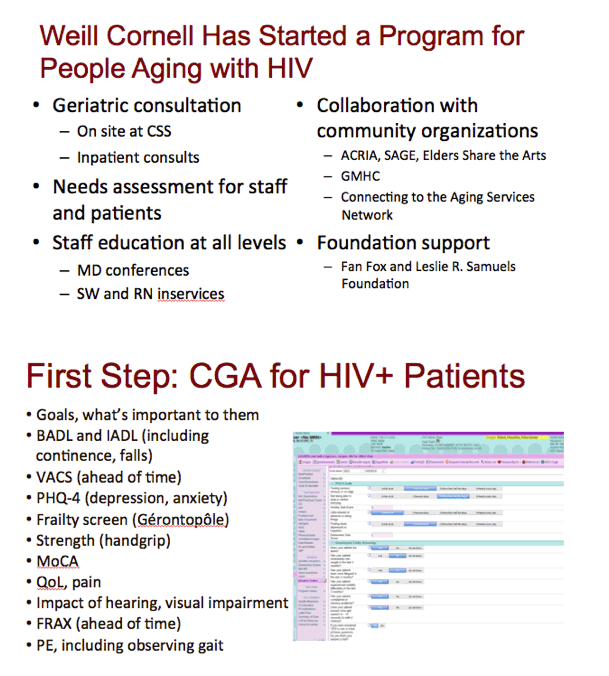
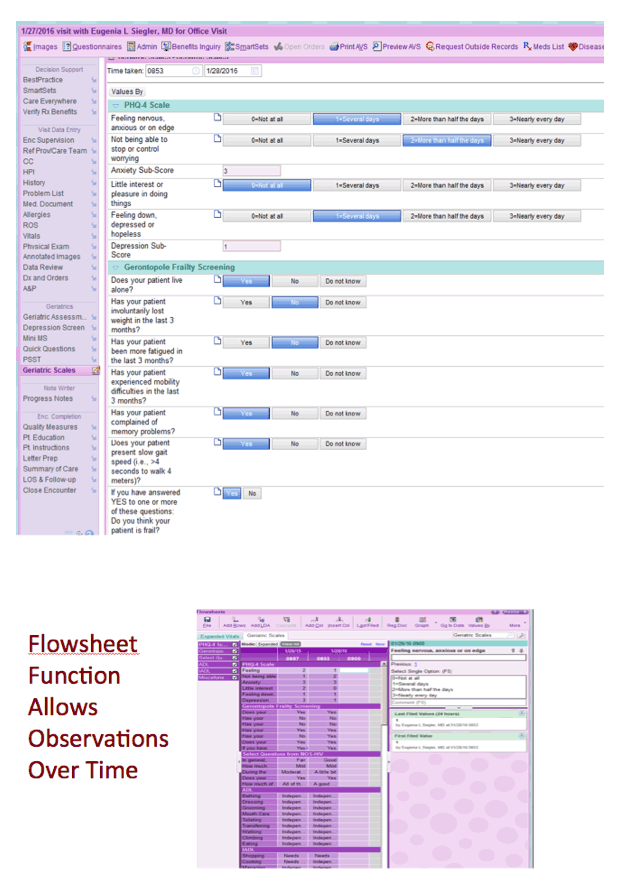

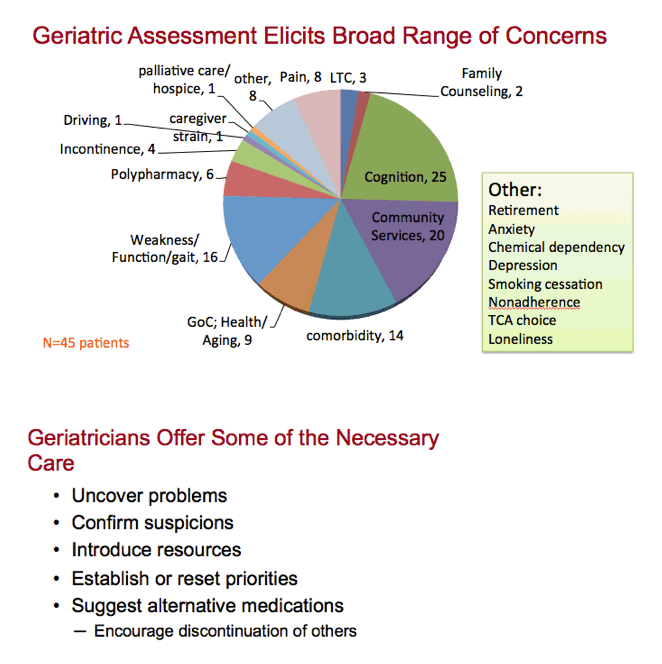
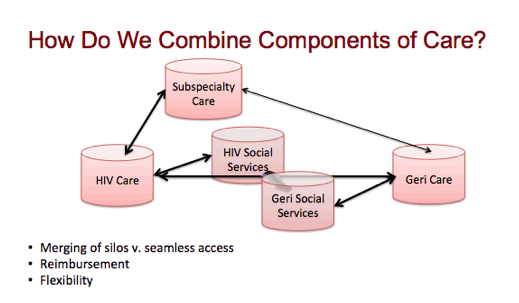
|
| |
|
 |
 |
|
|